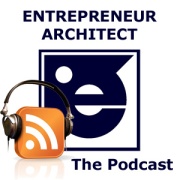Under-promise. Over-deliver.
We’ve all heard this old adage, but how many of us follow its simple lesson?
We recently recommended one of our consultants to a client. We’ve been very happy with this consultant’s performance and were confident they would perform well. As expected, they jumped right on the project and completed the first task lickety-split. Our client was happy and we were looking good.
To wrap things up, the consultant said they would prepare a report to document their findings. The client needed the report to move to the next phase and the consultant lead the client (and us) to believe that they would deliver the report promptly.
Almost three weeks later… still no report. Our client was NOT happy. I called to follow up. The consultant was on vacation the week prior and they promised to have the report delivered by day’s end. Great! I called the client and assured him that the report would be waiting in his inbox shortly. Crisis averted, I thought.
The next morning… still no report. The client called the consultant (now angry) to demand that the report be delivered as promised. He had funds tied up and required the consultant’s document to have them released. Again, the consultant promised to deliver the goods by the end of business day.
Day three; no report and again, a promise… and a fuming client.
The report was finally delivered via email on the morning on the fourth day. The client claimed his funds and everything was back on track, but unfortunately the client will look elsewhere for that consultant’s services in the future.
With all good intention (I know they were sincere with every promise), the consultant over-promised and under-delivered.
What if the consultant promised that the report would be delivered by week’s end? It’s difficult to say no when a client wants something right away. We always want to say yes. In the end, the most important thing is to, at least, do what you say you are going to do. The client would have been disappointed, but knowing that the consultant was on vacation the week before, he would have understood the situation. From the client’s perspective, the report would have been delivered soon enough. Then… when the clinet received the report a day SOONER than EXPECTED, he would have been thrilled.
The same report, delivered the same day. One approach results in an disgruntled client. The other… total satisfaction.
Managing the client’s expectation; there are few more important tasks we perform as service providers. It’s the difference between a good referral and an unhappy client.
Fast Company Magazine recently published an article about the business philosophy of over-delivering; taking it to the next level. Companies are using the concept and causing their customers to experience memorable moments that affect their habits for a lifetime.
What do you think? Do you under-promise and over-deliver? You should be.
Let’s talk…
Please share this post with a friend:



